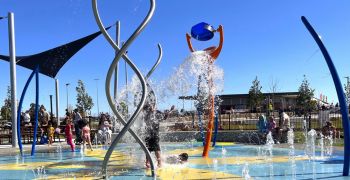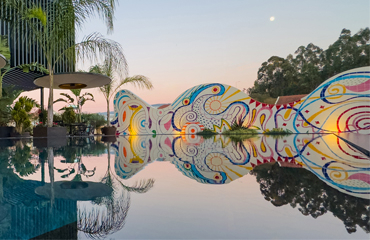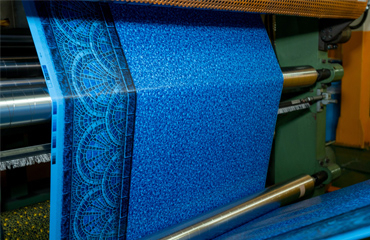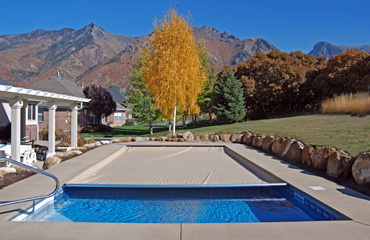‘Spain is a world benchmark market for the wellness industry’
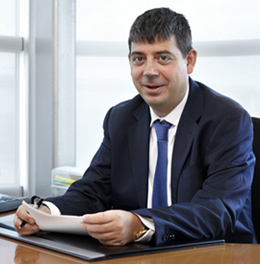 Eloi Planes, president of the Salón Internacional Piscina Barcelona |
With a degree in Industrial Engineering from the Technical University of Catalonia and a Master’s in Management from EADA, Eloi Planes (Barcelona, ​​1969) was appointed President of the organizing committee of the International Aquatic Exhibition Barcelona in 2010. His professional career began in 1998 in Astral. In 2000 he became CEO of the same company, and in 2002, Fluidra was created under his leadership. In 2006, he was appointed CEO of the group, and in 2007 led its stock market launch. In this interview, he talks about the challenges, prospects and trends of the pool sector and the new features of the next edition of the show.
How is the next edition of the International Aquatic Exhibition shaping up?
E.P: After two decades and ten editions, Piscina Barcelona is a clear reference in the sector, both nationally and internationally. This time it will bring together the supply and demand of the world of residential pools and the facilities that enable the use of water for recreation, sports and therapy. There will be around 300 companies present, 61% of them foreign, from 22 countries. China, Belgium, the USA, Germany, the Netherlands and Canada, which has slightly increased its presence, are just some of the countries exhibitors hail from. We estimate that half of the 19,000 visitors will be foreign, from around a hundred countries including France, Italy, the UK, Sweden, Israel, Turkey, Russia, Germany, the USA and Brazil.
What are the most significant developments of this new edition of Piscina Barcelona?
E.P: This time we wanted to promote the show as an important interactive platform for the wellness sector, analysing its various aspects with the help of international experts. So, we created the Wellness & Spa Experience Event, a gathering of Spanish and foreign businesspeople and professionals in the field who will have the opportunity to share their knowledge and study both business opportunities and new lines of management and marketing of these products and services.
You mentioned international experts. Could you give us some names?
E.P: The event will feature 16 speakers. Some of the most prominent international experts are: László Puczkó, tourism director of Xellum Management Consulting Company and CEO of the Global Wellness and Spa Tourism Industry Monitor, a project of The Tourism Observatory for Health, Wellness and Spa, Xellum (Hungary); André Gérard, wellness expert and senior consultant at Eurofin Hospitality (Lausanne, Switzerland), Jean-Eric Knecht, president and cofounder of Elegance Group and leader of the ISO International Wellness and Spa project, and Andrea Lomas, head of Group Spa Operations at Mandarin Oriental Hotel Group in Hong Kong.
What measures do you plan to implement to facilitate networking as part of the Wellness & Spa Experience Event?
E.P: Every day the experts will have lunch with attendees who wish to have direct contact and a physical space to share experiences, concerns and their business vision. The event will also feature a mentoring service, i.e. a space where speakers, experts and sponsors will meet with visitors to provide guidance on aspects of their business they want to improve.
What’s the current situation in the pool sector in Spain? What about internationally?
E.P: Spain is one of the world’s benchmark markets and second in Europe, with over 1.1 million private pools for family use. It should be noted that 52% of them are over 10 years old, which is a great opportunity for renewal, in addition to strengthening the trend to incorporate new equipment and accessories.
According to the latest data, there are 15 million pools worldwide. The US, with 9 million pools and a turnover of 3 billion dollars, accounts for 61% of the world market. South America accounts for 4%, and the growth rate of Latin American countries is between 6% and 8% annually. The European Union, with nearly 4 million pools, accounts for 26%, with France in the lead, followed by Spain, Germany, Italy and the UK.
The crisis has deeply changed the dynamics and growth patterns of most Western economies. In Europe and America, pool construction has declined, but in North African and Asian countries it is increasing. Europe remains the most sophisticated market in terms of trends, while Brazil presents a combination of three phenomena: maintenance, renewal and construction.
It is often said that the way out of the crisis is through exports. Do you sell Spanish pools overseas?
E.P: The turnover of the sector at the end of last year was 1.19 billion euros. Thanks to foreign markets we were able to offset the decline in domestic demand. Spanish companies significantly increased their exports over the previous year, reaching 425 million euros in sales abroad.
What are the main trends observed in the swimming pool industry, both nationally and internationally?
E.P: When we talk about residential pools, we see that consumers is returning to the classic rectangular pool and that they believe in quality accessories and customise with original features. We also note a growing interest in minimizing the impact of the structure on its natural setting by using sustainable solutions. When it comes to pools for public use, investments are primarily in safety and rational use of resources, making use of the systems offered by new technologies.
They reasons people buy a pool have also changed. Relaxation figures in third position for the first time, after cooling off in summer and spending more time with the family. Moreover, the decision to buy is becoming more rational: the client seeks above all quality and durability.
In your opinion, what is the role of innovation in the growth of the sector?
E.P: For the industry, innovation is critical: without innovation you get left behind in the markets. To continue to evolve we must invest in R&D, not only to meet the demand of the ‘here and now’, but to anticipate the needs of consumers.
Can wellness can be considered a market with a future?
E.P: In the world’s 30 richest countries it is estimated that there are 289 million consumers of these services related to the therapeutic use of water, representing a turnover of nearly two billion dollars according to a 2011 study by SRI International Research at Stanford (USA). This figure includes the turnover of nine different disciplines: spas, alternative medicine (naturopathy, homeopathy, etc.) nutrition (organic foods and nutritional supplements), preventive and personalized healthcare, medical tourism and wellness, beauty and anti-aging therapies, Eastern disciplines (yoga, meditation), and exercise in general. In this regard, it should be noted that this year the show will coincide at Gran Via with Body Life, the event dedicated to the fitness industry which will feature proposals for equipment, design, installation and management of sports facilities. The partnering of the two events will provide a unique opportunity to find out everything the welfare sector has to offer.
What are Spain's wellness figures?
E.P: According to the results of a study by consultancy firm DBK in September 2012, Spain has about 800 wellness establishments, of which 67% are spas installed in hotels, 20% urban spas or spas located in residential areas , wellness centres and shopping centres, 11% thermal spas and the remaining 2% thalassotherapy centres. Also, tourism-oriented health and wellness establishments billed a total of 3.25 billion euros in 2011. The segment with the strongest growth was spa hotels, which in 2011 recorded an 11% increase in turnover thanks to the influx of foreign tourists, which offset the drop in domestic demand. These figures show that the wellness industry, having experienced exponential growth in recent decades, is increasingly professionalized and it definitely has a huge potential and a future ahead.
Where is R&D heading in the pool sector?
E.P: The trend is to integrate technology into pools, allowing the rationalization of water and energy consumption and at the same time ensuring maximum efficiency of the structure. Pool maintenance is a good example: home automation can achieve ‘smart’ control of processes such as filtration, pumping, dosing of disinfectants, water use records or heating. Other trends include the use of alternative energy, LED lighting, new HVAC systems that take advantage of residual heat, or the application of eco-sustainable, i.e. technologically recyclable, materials. These are examples of systems that, along with passive measures that directly affect the architectural design (insulation, orientation, shading devices) allow maximum energy efficiency and the consequent savings in consumption.
In this respect, and to reaffirm our commitment to sustainability, the show will feature the Barcelona International Aquatic Exhibition Awards for Innovation and Sustainability, which will be given in recognition of the entrepreneurial spirit of sector brands. The awards will go to two of the best innovative initiatives to ensure sustainability in the pool and wellness, and water sports and recreational facilities sectors.
Do you consider an event like Piscina Barcelona necessary for the sector at this moment in time?
E.P: Yes, absolutely. Since 1994, the year of its first edition, the show has helped to energize one of the strongest markets in the country. It is a strategic meeting for companies wishing to consolidate their distribution network, expand their portfolio of domestic and international customers and find new ideas to diversify business. I think that even more so in times of crisis we must seize every opportunity offered by the market to invest in knowledge, networking and innovation.





